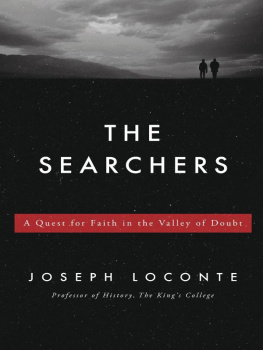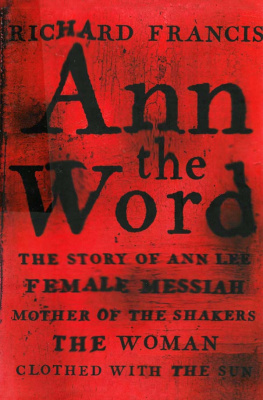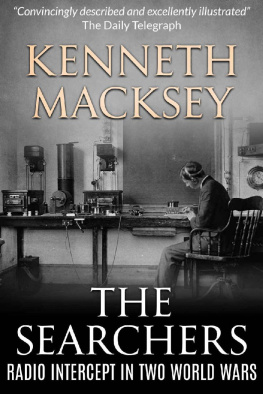SEARCHERS, SEERS, & SHAKERS
Searchers, Seers, & Shakers
Masters of Social Science
James A. Schellenberg
First published 2007 by Transaction Publishers
Published 2017 by Routledge
2 Park Square, Milton Park, Abingdon, Oxon OX14 4RN
711 Third Avenue, New York, NY 10017, USA
Routledge is an imprint of the Taylor & Francis Group, an informa business
Copyright 2007 by Taylor & Francis.
All rights reserved. No part of this book may be reprinted or reproduced or utilised in any form or by any electronic, mechanical, or other means, now known or hereafter invented, including photocopying and recording, or in any information storage or retrieval system, without permission in writing from the publishers.
Notice:
Product or corporate names may be trademarks or registered trademarks, and are used only for identification and explanation without intent to infringe.
Library of Congress Catalog Number: 2006051099
Library of Congress Cataloging-in-Publication Data
Schellenberg, James., A. 1932
Searchers, seers, and shakers : masters of social science / James A. Schellenberg.
p. cm.
Includes bibliographical references and index.
Contents: DiscoversTheoristsReformers.
ISBN 0-7658-0350-X (alk. paper)
1. Social scientistsBiography. 2. Social sciencesHistory20th century. I. Title.
H57.S34 2006
300.92'2dc22
[B]
2006051099
ISBN 13: 978-0-7658-0350-4 (hbk)
This work has been developing for more than half a century. It was during my college days, way back in the early 1950s, that I came across The Proper Study of Mankind . This book by Stuart Chase, published in 1948, gave a popular overview of developments in the social sciences. It made me want to become a social scientist.
Several of my undergraduate teachers were also prime influences. Two of these were sociology professors, and sociology became my major field. I saw this not only as an interesting field of study, but as a core area for the social sciences. Sociology continued to be my major when I did graduate work at the University of Kansas, but my interests ranged over a much broader area. I saw myself first as a social scientistintent on applying the methods of science to the understanding of human societiesand only secondarily as a sociologist. I took a great deal of psychology to support my sociology major, for I felt that social psychology was central among the behavioral sciences. By becoming a sociologist and social psychologist I felt ready to tackle the central questions of the social sciencessuch as the distinctively human way of becoming social, how behavior is framed by the cultural context, how groups set themselves apart in different ways, and how they may come into conflict with each other. Of course, I focused on specific questions for study (such as mate selection for my doctoral dissertation, and the effects of group size in another early work). However, at the back of my mind was always the conviction that the social sciences had a basic unity, and I intended that my own career would be directed to understanding this unity.
In 1974, I went to Ireland for a year as a visiting professor. The plan was to spend the fall in the North, and the following spring in the Republic. During this time I would be giving my research attention to the conflict in Northern Ireland. But what was I to offer in return? In preparing lectures that I could use in Ireland, I formed what might be called a biographical approach to social psychology. I could give general lectures on the lives and ideas of several of the intellectual giants of the field. These could be used both in my psychology placement in the North (at Coleraines New University of Ulster) and in my sociology teaching in the South (at University College, Cork).
After returning from my year in Ireland, I adapted my lecture materials into a book, Masters of Social Psychology, published in 1978. Here I presented several main approaches to social psychology by looking at the lives and thoughts of four masters-- Sigmund Freud, George H. Mead, Kurt Lewin, and B. F. Skinner. This book received a generally favorable response, and was ultimately translated into several languages other than English. From this effort I concluded that the biographical approach was at least one useful way to explore ideas in the social sciences.
As my career continued at Western Michigan University and Indiana State University, I pursued a broad range of research and teaching. Ultimately the study of social conflict and conflict resolution became my central focus. In two of my books in this area (in The Science of Conflict , published in 1982, and in Conflict Resolution , which appeared in 1996) I used a biographical approach in some of the chapters. I felt that looking at the lives of key people helped to describe their ideas and influences. This in turn helped me to clarify several main approaches to the study of social conflict.
As I embarked on plans for the present book, two central convictions were in the back of my mind. One was that there is a fundamental unity behind the various forms of social science. There is a general social science as well as a variety of social science disciplines . My second conviction was that a biographical approach was a useful tool for making clear some of the central ideas of social science. By looking at the lives and ideas of selected masters, we should be better able to understand the fundamental nature (or natures) of social science.
Then came the most interesting part. I read about the lives of many of the leading social scientists of the twentieth century. Finally, I selected eleven for special attention. These are the persons treated at length in this bookLouis and Mary Leakey, Margaret Mead, B.F. Skinner, John Dewey, Talcott Parsons, Kenneth Boulding, Gunnar and Alva Myrdal, C. Wright Mills, and Daniel P. Moynihan. I also looked at two men from earlier centuries (the Marquis de Condorcet and Auguste Comte) who helped set the stage for modern social science.
Certainly there are other men and women who have had a tremendous impact on social science. But I feel that my selections at least serve to illustrate the broad nature of social scienceincluding the discovery of new understandings, the development of theories about them, and applications of our knowledge toward the betterment of human society.
J.A.S.
Part 1
Introduction
1
The Coming of Social Science
Mathematician and Philosopher
Born in northern France in 1743, he was christened with a long name: Marie Jean Antoine Nicolas de Caritat. Soon, however, he became known as the Marquis de Condorcet, for he was born into the French nobility. His father, a French cavalry officer, died before Condorcet was five years old. His mother, a deeply religious woman, consecrated her frail child to the Virgin Mary and saw that he had the very best education provided by Jesuit schools. To further protect him, she tried to isolate him from other boys and saw that he wore only girls clothes till he was nine years old. Extremely shy as a boy, he became as a man what one biographer has described as extremely refined with a craving for intimacy and affection to which was joined indecision, a certain timidity, and a dangerous impressionability.













